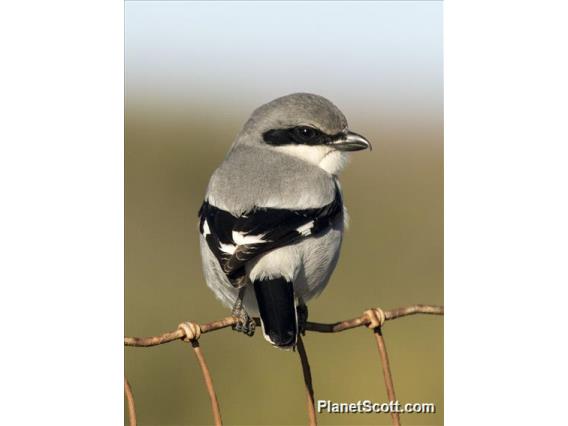Loggerhead Shrike (Lanius ludovicianus)


About Loggerhead Shrike (Lanius ludovicianus)
- Kingdom: Animals
- Phylum: Chordates
- Class: Birds
- Order: Perching Birds
- Family: Shrikes
The loggerhead shrike is a passerine bird in the family Laniidae. It is the only member of the shrike family endemic to North America; the related northern shrike occurs north of its range, however it is also found in Siberia. It is nicknamed the butcherbird after its carnivorous tendencies, as it consumes prey such as insects, amphibians, lizards, small mammals and small birds, and some prey end up displayed and stored at a site, for example in a tree. Due to its small size and weak talons, this predatory bird relies on impaling its prey upon thorns or barbed wire for facilitated consumption. The numbers of loggerhead shrike have significantly decreased in recent years, especially in Midwestern, New England and Mid-Atlantic areas.
Source: Wikipedia
Visits
-
2006-04-16
Kern National Wildlife Refuge, United States of America -
2006-08-09
Canyonlands National Park, United States of America -
2007-01-22
Palo Alto Baylands, United States of America -
2008-02-21
Puerto Adolfo Lopes Mateos, Mexico -
2008-12-06
Solano County Farmlands, United States of America -
2010-02-20
Coatepec, Mexico -
2012-12-06
Solano County Farmlands, United States of America -
2013-04-16
Aransas NWR (CTC 037) (Aransas Co.), United States of America -
2013-04-17
Brazoria NWR (UTC 108), United States of America -
2013-04-19
Bolivar Peninsula, United States of America -
2013-04-19
Anahuac NWR (UTC 049), United States of America -
2014-02-22
Panoche Valley, United States of America -
2014-05-08
Pinery Canyon Rd. (grasslands section only), United States of America -
2015-01-02
Pixley NWR, United States of America -
2015-01-04
Del Puerto Canyon and Mines Road, United States of America -
2015-01-04
Panoche Valley, United States of America -
-
-
-
-
-
-
-





